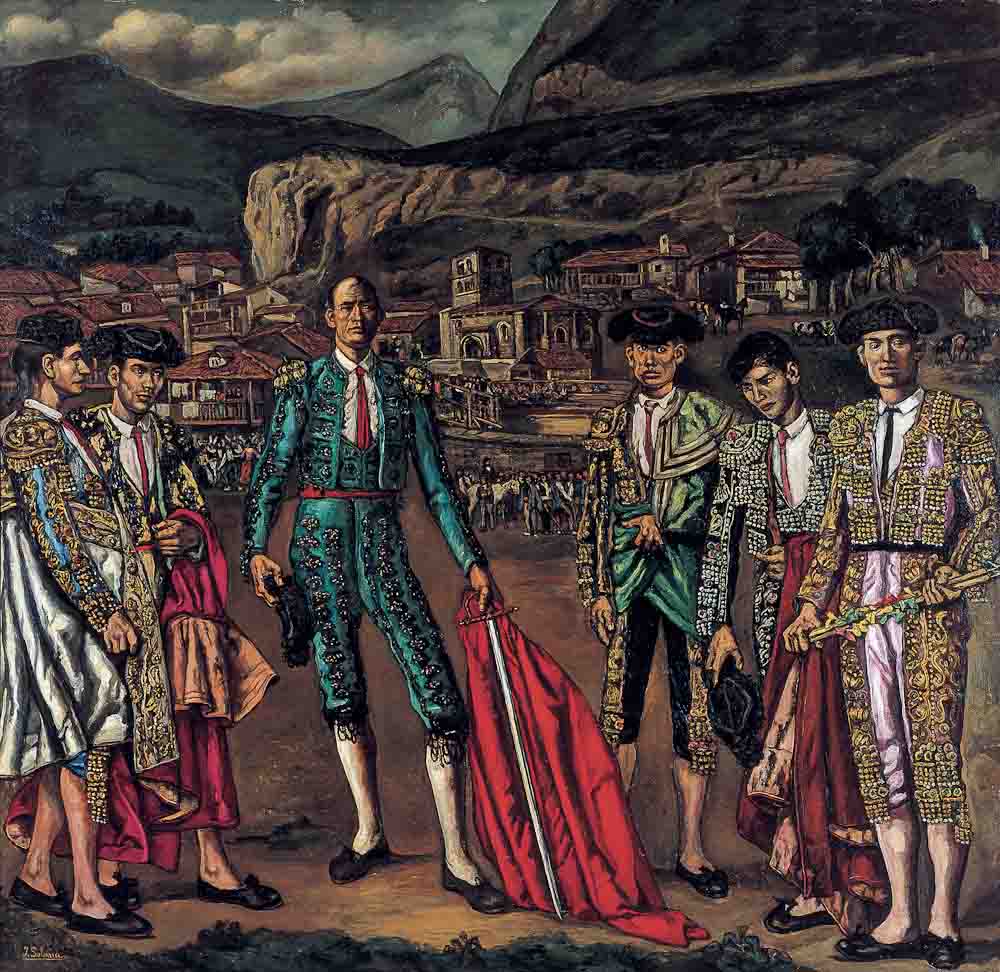
José Gutiérrez Solana (Madrid, 1886-1945)
El Lechuga and His Team
circa 1915/1917–1932
WORK INFORMATION
Oil on canvas, 220 × 228 cm
OTHER INFORMATION
Signed in the lower left-hand corner: "J. Solana" Inscriptions on the reverse, on the central stretcher bar: "José G. Solana"; on the upper bar: "El Lechuga y su cuadrilla"
El Lechuga and his Team, which Solana started in Santander between 1915 and 1917 and completed at a later date in Madrid, depicts an amateur bullfighter who was a cobbler according to Sánchez Camargo, or a carpenter named Isidoro Cosío according to Benito Madariaga. He was definitely from the village of Camorna in the province of Santander, knew Montes’ manual on bullfighting by heart and was so enthusiastic that he would practice with the cat at home. His wife made him his traditional bullfighter’s suit (known as a “suit of lights”) in a shade of virulent green, hence his nickname El Lechuga, meaning The Lettuce. Solana depicts him standing triumphantly with his team, despite the fact that his only experience in the ring was a disaster.
The painting reflects Solana’s own ambivalence regarding the world of bullfighting, which he disliked for its harshness, cruelty and drama but which also greatly attracted him.
His interest dated back to 1909 when he met the trainee bullfighter El Bombé during a trip to the Cordoba region. Impressed by Solana’s knowledge of the subject, the young torero invited him to join his team. Dressed in the appropriate costume, Solana made a few passes before he was charged and had to be carried from the ring.
This is an homage to an anonymous bullfighter whose greatest ambition was to wear the traditional “suit of lights”. Solana presents him as a valiant torero whose figure is outlined against a mountain landscape that includes the collegiate church at Cervatos.
Here Solana makes use of his own iconographic and conceptual universe, which has been termed “Solanesque”. It is a dramatic, pessimistic view of existence that evokes
the concept of “Black Spain” as it was known at this time: a dark country of bulls, religion, poverty and suffering.
This is a type of painting “made with the black pigment of life” as Ramón Gómez de la Serna described it, which Solana translated onto his canvas in a rich range of greens and reds of the most luminous type.
María José Salazar

